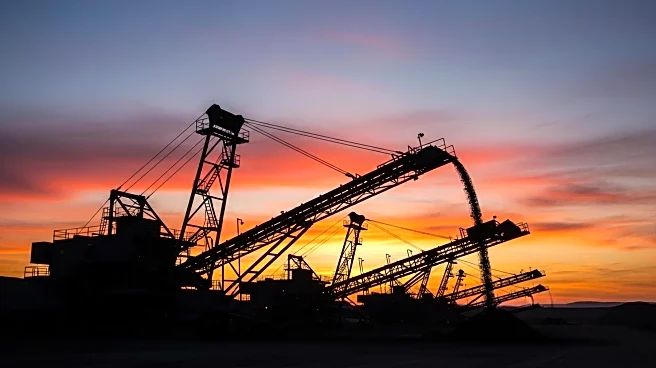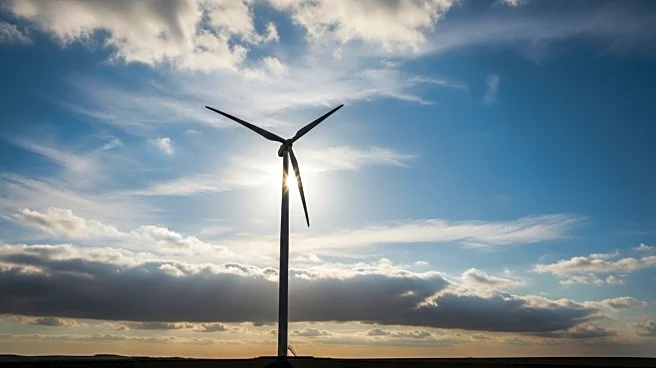What's Happening?
The Powder River Basin in Wyoming, home to the North Antelope Rochelle Complex and the Black Thunder Mine, is experiencing significant changes as open-pit coal mining continues to expand. These mines, which produced 22% of the U.S. coal supply in 2014, are facing a future with less than 20 years of economically recoverable coal remaining. According to USGS officials, once the coal is depleted, companies will be required to reclaim the land, transforming it from its current industrial use back to a more natural state.
Why It's Important?
The impending depletion of coal reserves in the Powder River Basin has significant implications for the U.S. energy sector and local economies. As coal production declines, there may be shifts towards alternative energy sources, impacting energy policy and market dynamics. The requirement for land reclamation also highlights environmental considerations, as companies must restore the landscape, potentially affecting local ecosystems and land use. This transition could lead to economic challenges for communities reliant on coal mining jobs.
What's Next?
As the coal reserves approach depletion, companies and local governments will need to plan for the transition to land reclamation. This involves developing strategies for economic diversification to support communities affected by the decline in coal mining. Stakeholders may explore opportunities in renewable energy or other industries to mitigate the economic impact. The reclamation process itself will require careful planning and execution to ensure compliance with environmental regulations and successful restoration of the land.
Beyond the Headlines
The shift from coal mining to land reclamation in the Powder River Basin may serve as a case study for other regions facing similar transitions. It underscores the importance of balancing economic interests with environmental responsibilities. The long-term implications could include changes in land use policies, increased focus on sustainable development, and potential innovations in reclamation techniques. This transition may also influence public perception and policy debates surrounding energy production and environmental stewardship.












